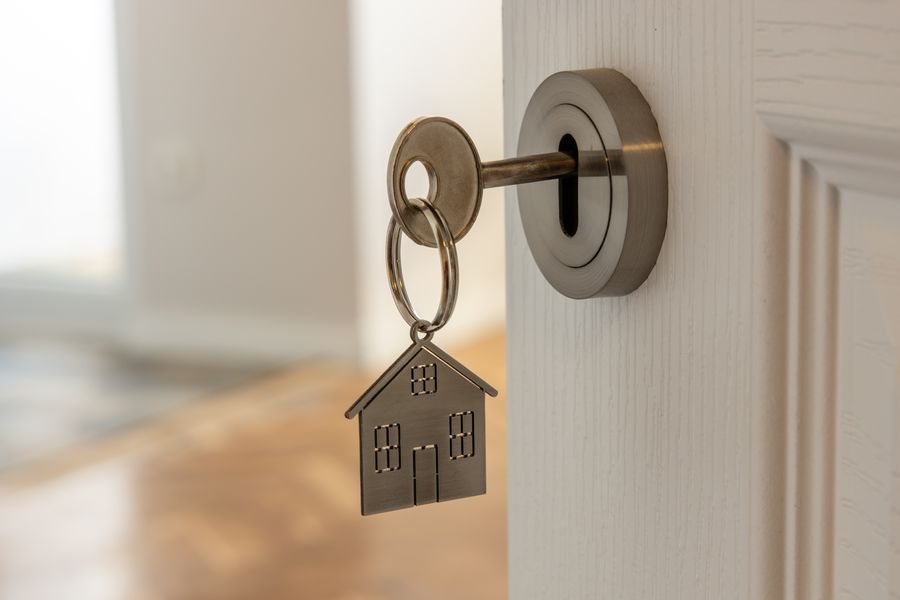In today’s Canadian real estate landscape, many homeowners are looking to sell and cash in on bigger, better homes. However, if these homeowners are currently locked into a mortgage for their existing home, the idea of selling can be daunting and some may think that upgrading or even downgrading is unattainable. Many property owners don’t realize that they may be able to qualify for a ported mortgage, but these flexible features offer an immense opportunity for residents in Canada.
Essentially, porting your mortgage is the process of transferring what you owe on your current mortgage over to a new mortgage. This has become quite useful for current homeowners looking to expand their family, relocate, or who are looking to break their mortgage without paying penalty fees.
However, there are certain eligibility criteria a homeowner has to meet in order to qualify for this service. Plus, not every bank/lender will offer this service.
Mortgage porting qualifications
When it comes to porting a mortgage, things like your rate and terms (and your lender) can make a huge difference.

1. Interest rate
If you have a fixed-rate mortgage, you have better odds of your lender being willing to assist you. However, if you’re mortgage rates are stuck at being a variable rate, which means your rate fluctuates over time, lenders will require you to change to a fixed-rate term. A variable-rate can generally spell out trouble for any existing property owner as it could fluctuate throughout the years of homeownership.
2. Purchase price of your new home
If your new property will cost more than your existing loan, you’ll probably have to go the blended mortgage route. This means that your existing mortgage payments will remain untouched, however, the difference will be blended with your mortgage payments.
3. Your current mortgage
If the home you’re purchasing is more than you owed on your old home, you’ll have to requalify for your original mortgage. Lenders will check your credit and assess whether your income can support a higher mortgage rate or not. This will help determine whether you’re able to port your mortgage.
A flexible solution
For many, their lender would specify if their mortgage is portable before even being approved in the first place. Fortunately, most mortgages are able to port. With that being said, however, not all mortgages are portable and you may be unable to negotiate your mortgage’s terms after the fact. This is why it’s incredibly important to not jump into a new mortgage without shopping around for the best mortgage term and interest rate to ensure you’ll be set up in a way that works best for you in the long run.
This is why working with professional brokers and lenders is important when shopping for a mortgage in the first place. This can ensure you don’t have to pay the fees for breaking your mortgage if you’re purchasing a new property. The penalty to break your mortgage can often be more than the fees associated with porting your mortgage. But if you’re looking to avoid these future costly fees, make sure you’re putting in the research to ensure you have a current mortgage that is flexible.
However, it’s no secret that the housing market in Canada is on fire and people might be looking to buy immediately which means rushing into mortgages with their bank. Especially during the COVID-19 pandemic, buyers have been rushing to take advantage of the historically low-interest rates. But no matter how good the deal may seem, you still want to take proper precautions and consult with professionals who can shop around for the best rate and term for you.

Consulting with professionals to port your mortgage
Whether you’re trying to sell your home, refinance, or want to begin the process of porting a mortgage, consulting with real estate professionals is always a good idea. These professionals can give you insight into how the industry works and can help you find the best rate and term for your mortgage amount, even if it’s from a non-traditional lender. They can help when you’re looking to buy, sell or hook you up with a professional mortgage broker to help you find the best deal on your loans.
Brokers can help you navigate mortgage rates and make your mortgage work for you. When you’re in the market for a new house, definitely consult with a professional to get the best rate that could ultimately save you thousands in the long run. Another benefit is that they can ensure you are setting yourself up to be able to port your mortgage in the future if you choose to do so.
The process of porting a mortgage
When you’re considering porting your mortgage, it’s important to take into consideration the amount left on your existing mortgage. Porting a mortgage means transferring your existing payments to the next property you own. But ask yourself a couple of questions: is it worth it to move immediately? Will you be able to get a portable mortgage or will you have to break your mortgage and pay the penalty? Are your current rates lower than the market average? Is porting a mortgage actually worth it in the long run? These should all be things you should be asking yourself if you’re looking to get out of your mortgage early.
The process of attaining a ported mortgage depends on a few things, for example, the lender can determine whether you agreed to a portable or non-portable mortgage. Pay attention to the terms of your current mortgage, as it will let you know if you have to break your mortgage, or if you can port it.
Once you’ve determined you’re able to port your mortgage, you’re able to start looking for a new house, while selling your current home. However, if you sell your current home, it’ll allow you to seem more serious when looking at and purchasing a new home.

Breaking vs. porting
Is it better to port rather than breaking your mortgage? Typically, the penalty for breaking your mortgage is the amount of interest accumulated in 3 months. There are a number of reasons to break your mortgage, from trying to get a better interest rate to purchasing a new property, and even consolidating debt onto your current mortgage payment.
These options can save you money in the long run. However, you might find yourself paying more upfront. You’ll have to pay a penalty if you’re trying to get out of your mortgage before your term is finished. A term can last anywhere up to 5 years. Additionally, when you break your mortgage to refinance, you’ll have to go through the same process that you originally went through when attaining your mortgage. You’ll have to find a lender, reapply, have a credit check and discuss rates. But doing this could save you up to 30% on your mortgage payment.
It’s also worth it if you’re trying to lower your interest rate as you could be paying a higher rate than the market is offering. This is especially crucial during the pandemic, where the current rate for property owners in Canada is historically low. You could get another fixed-rate mortgage that might help you save hundreds monthly.
This is where porting your mortgage comes in because you can take your existing mortgage and make it work for a new mortgage. This means you don’t have to pay the penalty fees. There are still fees associated with mortgage porting but they’re a lot less than the penalty to break a mortgage.

Porting your mortgage in Canada
For Canadians, the thought of porting your mortgage might be appealing for those looking to buy another property. Mortgage rates are at historical lows, and porting seems like a good option for those looking to purchase a new home and sell their old property. If you’re thinking about moving from the original home you purchased, porting might be the best move for you.
Many buyers are forgoing speaking with their bank before looking for property in Canada but they’ll end up paying for it in the long run. When it comes to selling and buying a new home at the same time, are there ways to get the best mortgage rates while porting?
For example, if you’ve ported your mortgage and are looking to be paying less on your loan, that’s only likely to happy if the market rates are low. Typically, people port their old mortgages to lower their current rate. However, choosing to port for a new home your lender may deny your request based on different financial barriers and bad credit.
Once your mortgage has been ported
Once you’ve figured out all the logistics of porting a mortgage, you can focus on moving. You’ll know what you have to pay, what rates to be expecting, and when your term will end on your new mortgage. You’ll still need to figure out the ins and outs of closing on your old home and tie up any loose ends.
No matter what your mortgage amount is, choosing to port your mortgage is always a great idea. Porting can open up a world of opportunity when it comes to finding a new house. Aside from helping your loan, and ensuring you’re making the same payment amount no matter which house you’re in, it can also help in another way: porting doesn’t affect your credit score the same way that breaking or defaulting on your mortgage does.
It makes sense that breaking your mortgage can affect your credit score. Much like how missing a payment on your bills can bring your score down, so can changing up your mortgage amount with lenders or a bank. Lenders typically need a credit score over 650 to allow someone to take on a large loan, like a mortgage amount. Just like it was when you first got your mortgage, your credit can affect how you get a new mortgage.

The benefits
In short, porting a mortgage has a number of benefits. The main one being that you get to keep your payments the same throughout your current mortgage term. This can make it easier for people to move to bigger, better homes, or even downsize for their retirement. If you’re looking to port, consider consulting industry professionals to give you a good feel of what to expect and to answer all of your questions thoroughly.
Porting is a flexible feature of modern mortgages that allows property owners to move without facing any penalty associated with choosing to break a mortgage. Porting means that you don’t have to pay outrageous fees to get out of your current situation and get onto better things for you and your family. As a lender, porting is a great way to keep current customers and build relationships that matter when it comes to refinancing in the future.
If you’re looking at porting a mortgage but are unsure of where to start, look at the terms of your current mortgage. It’ll give you a hint as to whether you meet eligibility criteria. From there, determine whether you’ll have to break or port, then work on figuring out the fees associated with both. Once you’ve made that decision you’re ready to start looking for your ideal next home, or investment property. Remember that having your property already sold, with conditions, will make it easier to purchase your next home. If all else fails, you know that consulting with your lender on what you can do with your mortgage will help assist in your porting endeavours. Happy house hunting!









